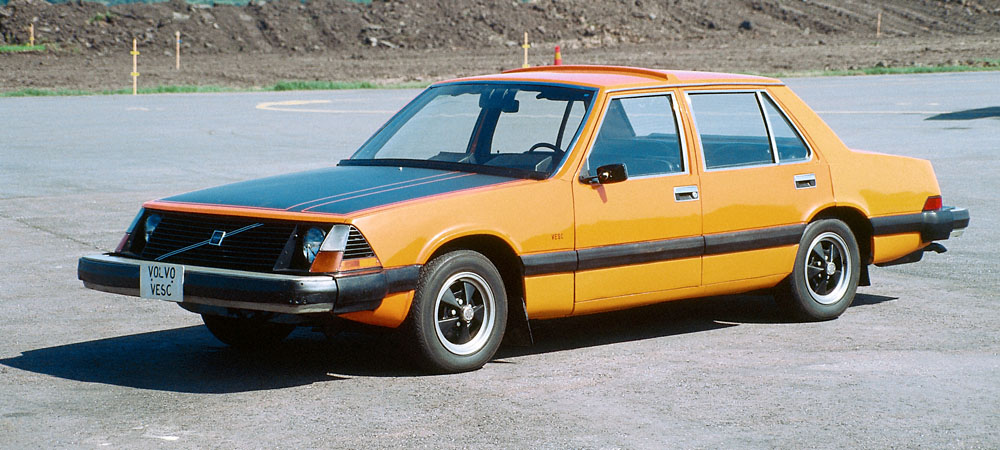
Volvo VESC Concept Car
Volvo Experimental Safety Car from 1972: a concept car long before its time in the field of car safety research.
1 March 2005
- A range of innovative technical solutions
- Forerunner of the Volvo 240
- Set the standards in terms of environmental issues too
The VESC (Volvo Experimental Safety Car) was unveiled at the Geneva Motor Show 1972 – a forerunner in the field of car safety and equipped with a range of technical solutions that subsequently became a natural part of Volvo’s leadership in this important area
From the viewpoint of appearance too, VESC hinted at the design language of the forthcoming Volvo 240, introduced in 1974 and later became Volvo’s longest-lasting model ever, with almost 2.9 million cars produced during its 19 year production run. The Volvo 240 also became the reference car for the American road safety administration NHTSA.
A series of concept carsThe VESC was equipped with a range of what at the time could only be regarded as highly innovative safety solutions.The VESC project had the following features, among many others:
- Safety belts of semi-passive type, that is to say the front seat belts were automatically strapped around the seat occupants when the car engine was started.
- Airbags for both front and rear seat occupants.
- Airbag as head restraint on the rear seat hatshelf.
- Concealed front seat head restraints that automatically deployed in a collision.
- A “disappearing steering wheel”. In a frontal collision, the steering wheel was pulled forward 150 mm, away from the driver.
- Headlamp washers and wipers.
- Rear windscreen washers and wiper.
- Extra-sturdy body. The front and rear sections were designed for optimum impact absorption. The passenger compartment was also protected by a robust network of beams in the roof, including an integrated roll-over cage. The body sides were reinforced with tubes to provide extra protection in a side collision.
- The rear engine mounts were designed so the engine would be forced to slide down under the car in a frontal impact.
- The extremely pronounced bumpers gave the car a characteristic profile. They protected the body against panel damage in low-speed impacts at up to 16 km/h.
- Anti-locking brakes.
- Automatic ride-height control.
- Automatic fuel supply cut-off.
- Acoustic reversing warning.
Innovative in terms of environmental consideration too
The VESC also served as mobile test-benches for other technical solutions such as a modified front suspension system. What is more, the four-cylinder fuel-injected B20 engine was further developed to meet the 1974 US exhaust emission requirements. With what is today known as EGR (Exhaust Gas Recirculation) and a catalytic reactor, the VESC concept can be regarded as a forerunner of Volvo’s subsequent catalytic converter with Lambda sensor, which was a sensational innovation at its introduction in 1976.
Before its time
The VESC project clearly demonstrated Volvo’s determination to continue setting the agenda in the field of car safety. Most of the technical solutions that were integrated into the VESC met in-house Volvo standards that were far stricter than contemporary legislation. Many of the solutions also found their way into the Volvo 240 – and even more have been gradually introduced into subsequent Volvo models.
Legal | Privacy | Contact Us | Search | Site Map
Volvo Owners' Club Limited® 1962-2025


